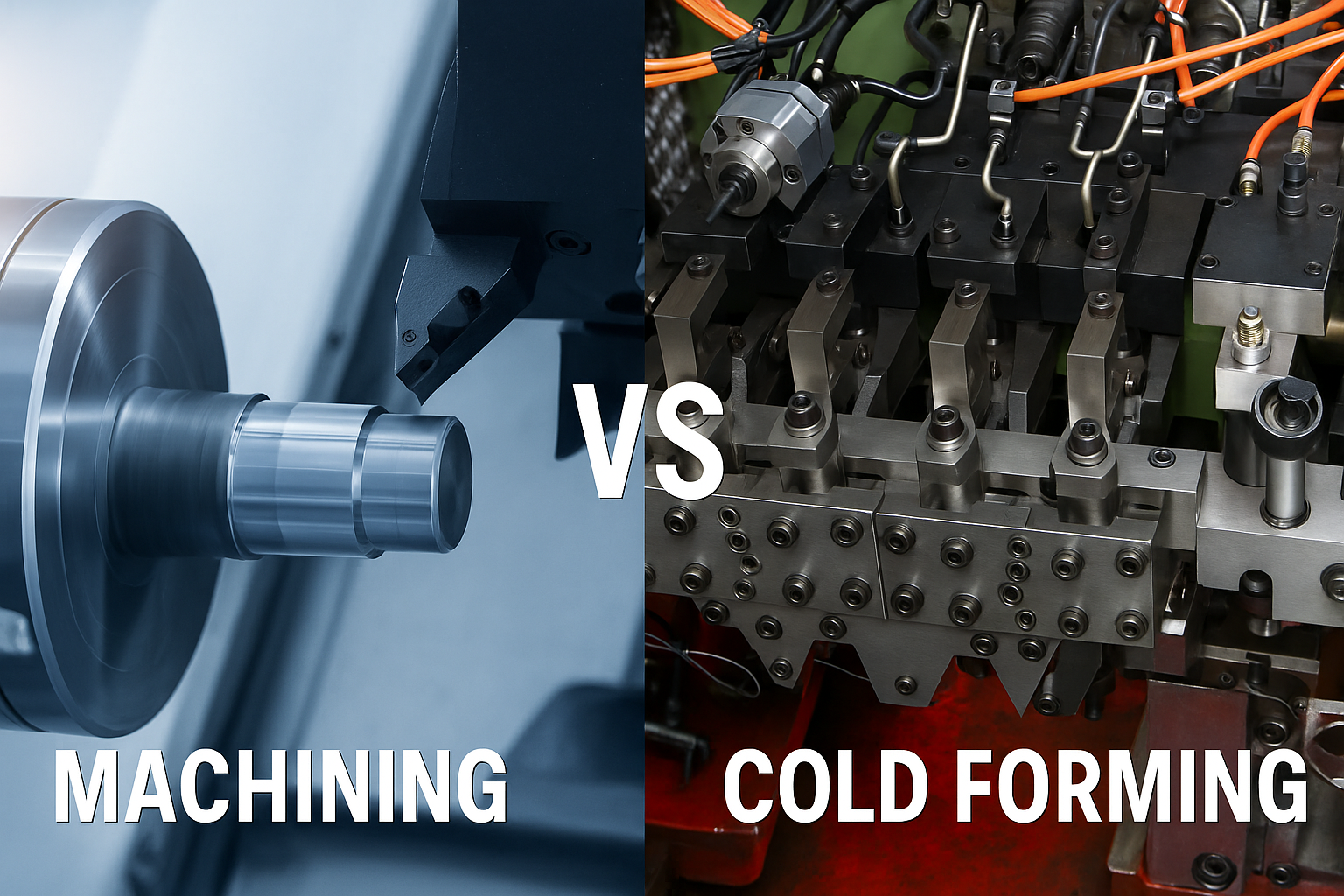Which production method suits your need best?
In industrial production, selecting the right method determines cost, quality, and time. In this article, we compare two essential methods for mechanical parts: Cold Forming and Machining.
🧱 Key Technical Comparison
|
Feature |
Cold Forming |
Machining |
|
Process Definition |
Plastic deformation at near room temperature |
Cutting away excess material |
|
Material Usage |
Near-zero waste, highly efficient |
High material loss, especially on complex shapes |
|
Production Speed |
Very fast, suitable for high-volume production |
Slower, depends on geometry |
|
Surface Quality |
High, often no post-processing needed |
Adjustable, can reach very high quality |
|
Mechanical Properties |
Stronger, refined grain structure |
May require heat treatment to strengthen |
|
Precision |
Moderate, improved by precise tooling |
Very high, micron-level tolerances achievable |
|
Complex Shapes |
Best for simple and symmetrical parts |
Ideal for complex and multi-surface geometries |
|
Tooling Cost |
High initial investment (tooling needed) |
Lower cost, flexible tooling |
|
Part Strength |
High, fiber structure remains intact |
Lower, cutting interrupts material continuity |
|
Application Areas |
Bolts, shafts, fasteners |
Prototypes, custom machine components |
📊 When to Choose Which?
|
Requirement |
Recommended Method |
|
Mass production, cost focus |
Cold Forming |
|
Complex design |
Machining |
|
High strength requirement |
Cold Forming |
|
Tight tolerances |
Machining |
📄 Conclusion
Cold Forming: High strength, minimal waste, fast production
Machining: High precision, flexible shapes, ideal for special parts



